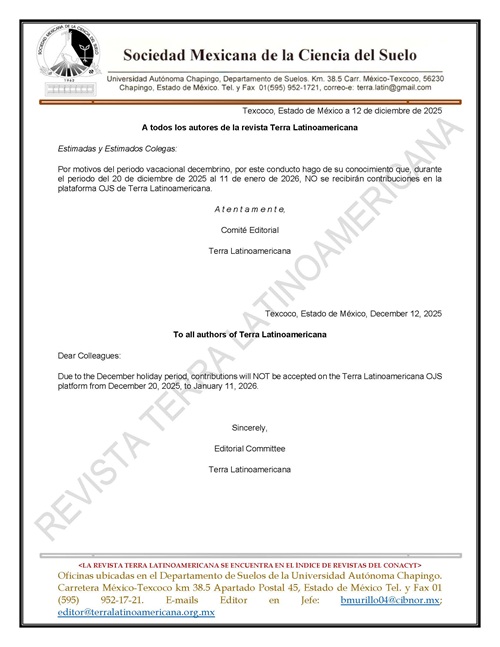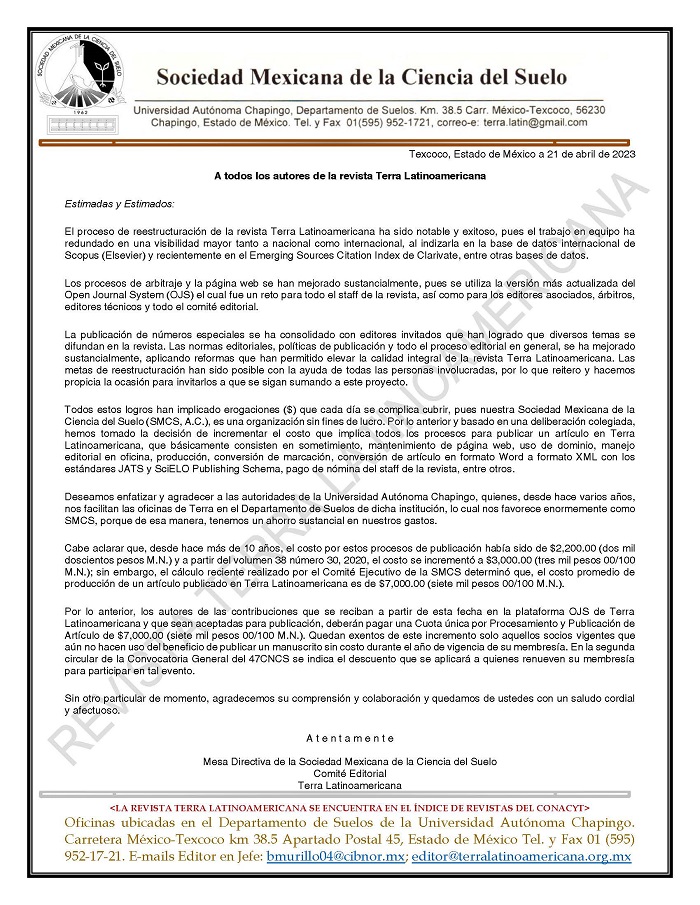Edaphic arsenic and its distribution in irrigation district 017: using interpolation methods.
DOI:
https://doi.org/10.28940/terra.v35i1.238Keywords:
arsenates, soil, Kriging, IDW, geostatisticalAbstract
Soil constituents (clays, carbonates, organic matter and oxides and hydroxides), involved in the mobility of arsenic (As), determine its spatial variation; thus, the mapping can contribute to the understanding of the presence of this metalloid on the soil. The objectives of this research were to determine the concentration of As in soils of Irrigation District 017 (DR017) of Mexico and establish its spatial distribution using two interpolation methods. Four stages were performed; the f irst consisted of desk work and f ield, in which 33 sampling sites were located in a polygon of DR017, then at each site, simple soil samples (0-30 cm depth) were collected. The second and third were carried out in laboratory, in which, in each sample the concentration of As available, clay content, carbonates of calcium and phosphorus available and their regression were determined. The fourth stage had two parts, the development of two maps with two interpolation methods (Interpolator Weighting Inverse Distance, IDW its acronym in English and ordinary Kriging, OK) and verif ication of the accuracy of each map. The results showed that the distribution of As in the DR017 is not uniform and is associated with CaCO3 and clay content. So that, As concentrations ranged from 0.07 to 1.89 mg kg‑1, where the highest concentrations of this metalloid (1.39-1.89 mg kg-1) were positively correlated (R2 = 0.9058) with high content of clay (39.44 to 43.44%). The map of spatial distribution of As obtained by KO, had the highest accuracy (75.7%), which shows that the concentration increases in a north-south direction, where the area of greatest concentration is in the northern part of the district.Downloads
Publication Facts
Reviewer profiles N/A
Author statements
- Academic society
- Terra Latinoamericana
- Publisher
- Mexican Society of Soil Science, C.A.

















